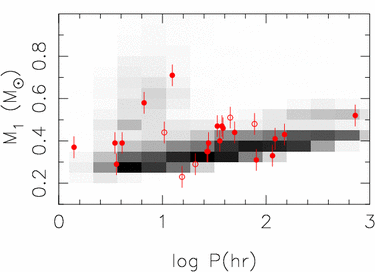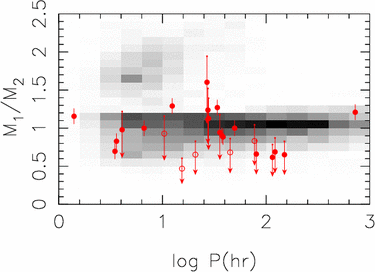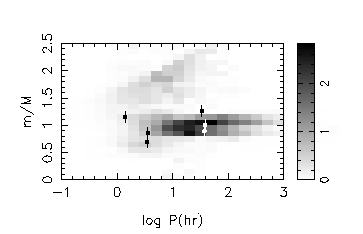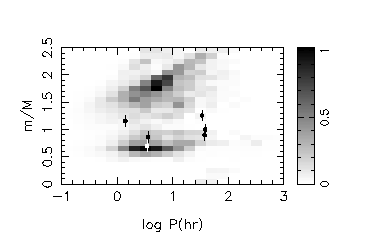Double white dwarfs
Common-envelope
evolution
AM CVn stars
Ultra-compact X-ray
binaries
Black hole binaries
SN Ia progenitors
Surveys
Gravitational waves
LISA wiki (verification
binaries)
Publications
Preprints
My thesis
Double white dwarfs
In the 1980s, on the basis of our theoretical understanding of stellar and binary evolution it was expected that many close double white dwarfs would exist. It was not until 1988 that the first one was actually discovered.
The way to find close double white dwarfs is to take high resolution spectra of the H-alpha absorption line of a white dwarfs at several times and look for variation in the narrow line core, that is caused by orbital motion of the white dwarf around an (dimmer) companion. The first systematic searches were rather unsuccessful (only one system was found). Later, during the 1990s, Tom Marsh and collaborators were more successful, when they concentrated their search on low-mass white dwarfs, which, based on theoretical considerations, could only be formed in a binary system. In this way a dozen more systems were found.
Recently, in a project lead by Ralph Napiwotzki, called SPY, we observed a large number of white dwarfs (~1000) with the very high resolution UVES spectrograph on the Very Large Telescope (VLT) and this sample will produce at least another 100 close double white dwarfs!
For a number of these double white dwarfs we determined their orbital
periods, using the William Hershel Telescope in the island of La
Palma. Their periods are between 0.44 and 3.22 days. The results are
published here.


Comparison of the observations with theoretical predictions (see below). The new data points are shown as open circles. Left: comparison in the plane of the orbital period and the mass of the brighter white dwarf. Right: comparison of the orbital period and (a limit on) the mass ratio of the binary. From Nelemans et al. 2005, A&A, 440, 1087)
Theoretical work
The observed double white dwarfs are a nice confirmation of the theoretical expectation. However, they immediately showed that our understanding of binary evolution is rather limited. On the basis of the observed mass ratio of only a few double white dwarfs we concluded that the standard description of an important phase in the evolution of the binary preceding the formation of the close double white dwarf, the so called common envelope phase, is not sufficient. In a paper we proposed a different description (see also Common envelope evolution and later used this in a study of the current population of double white dwarfs in the Galaxy.

Distribution of double white dwarfs as function of period and mass ratio for a model with our modified common envelope description (top) and of a model with the standard common envelope description (bottom). These plots are only for systems in which both white dwarfs are visible (the luminosity of the two white dwarfs is not more that a factor of 5 different). The modified common envelope description is in better agreement with the data (from Nelemans et al. 2001, A&A, 365, 491 see also Nelemans et al 2001, A&A, 350, 1011).
Gravitational waves from double white dwarfs
See Gravitational waves
